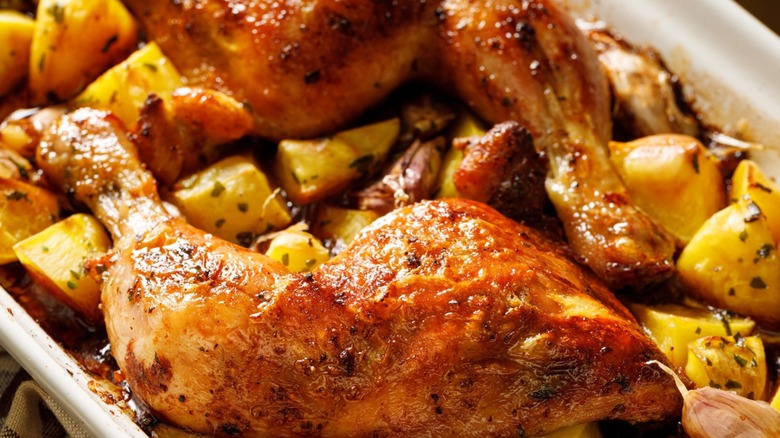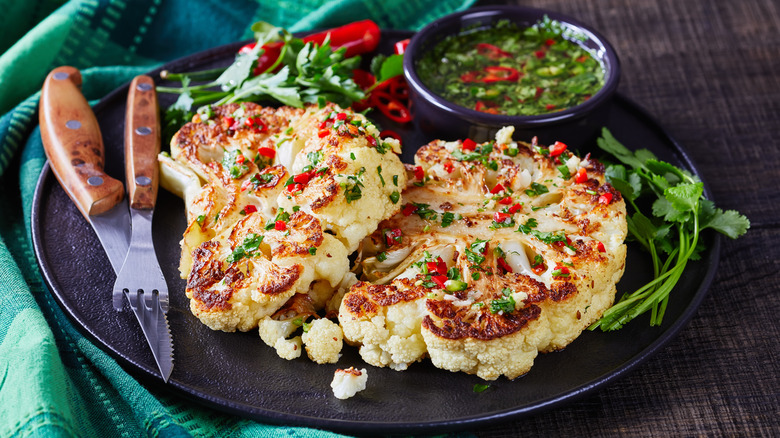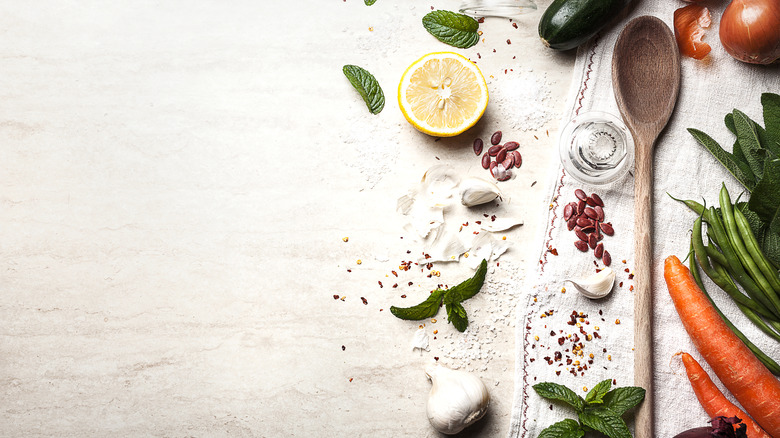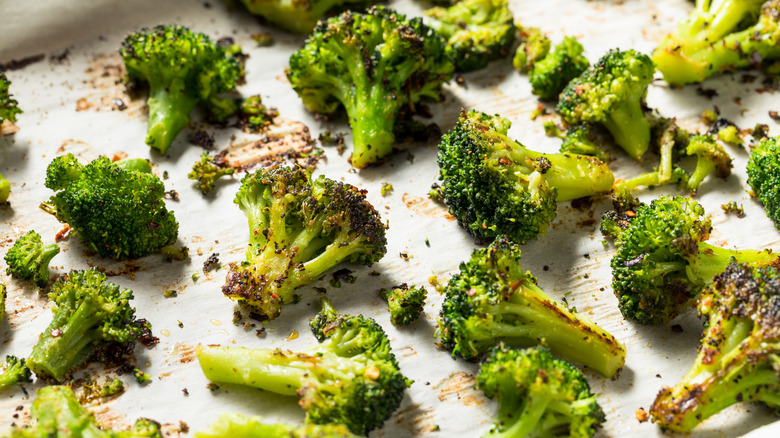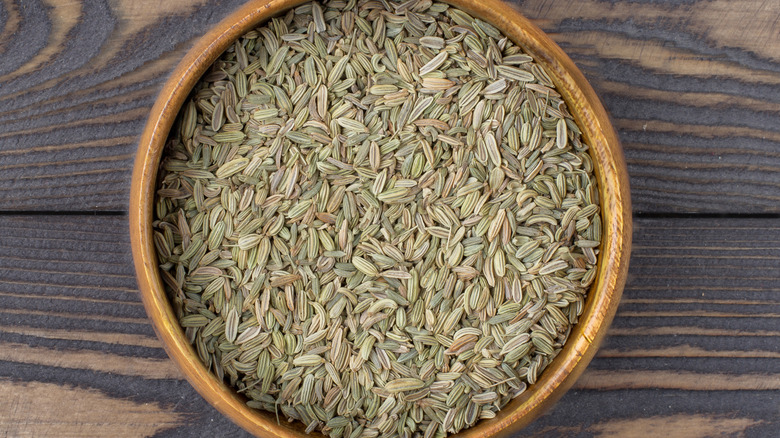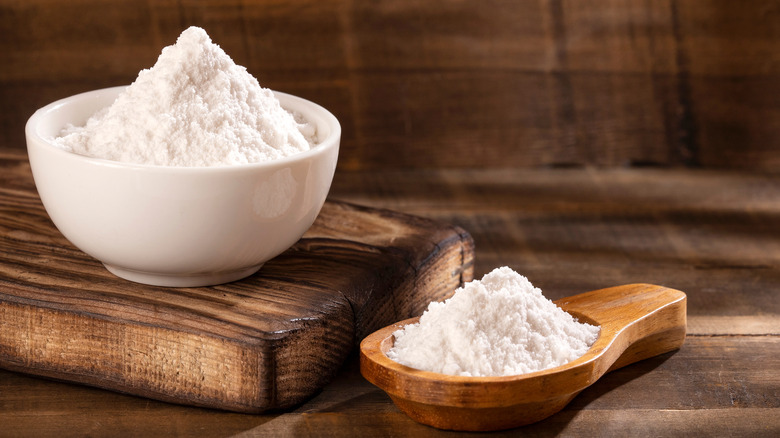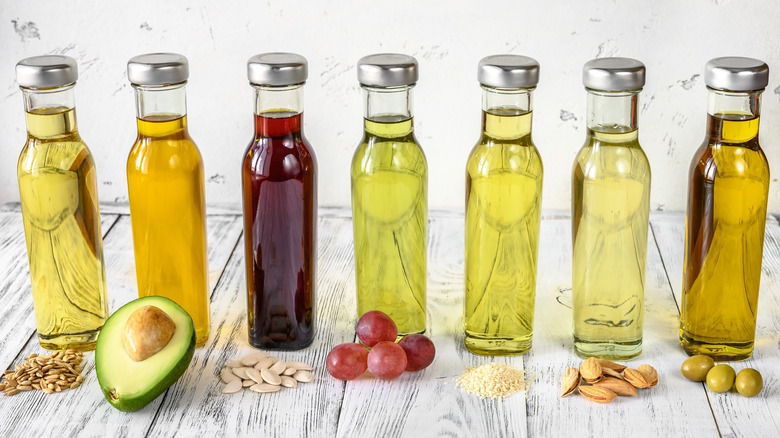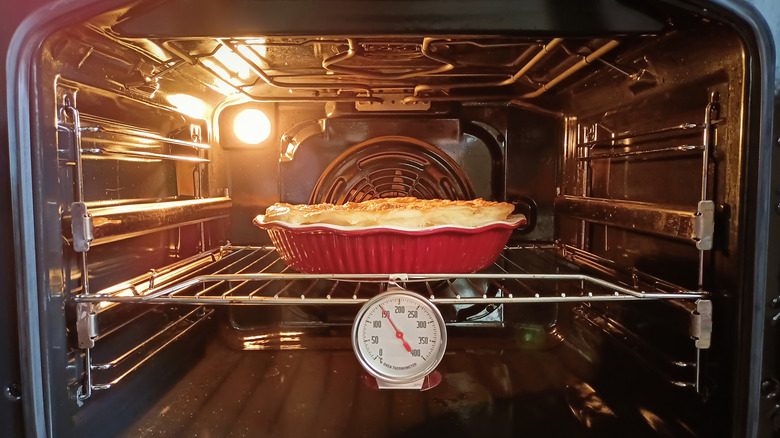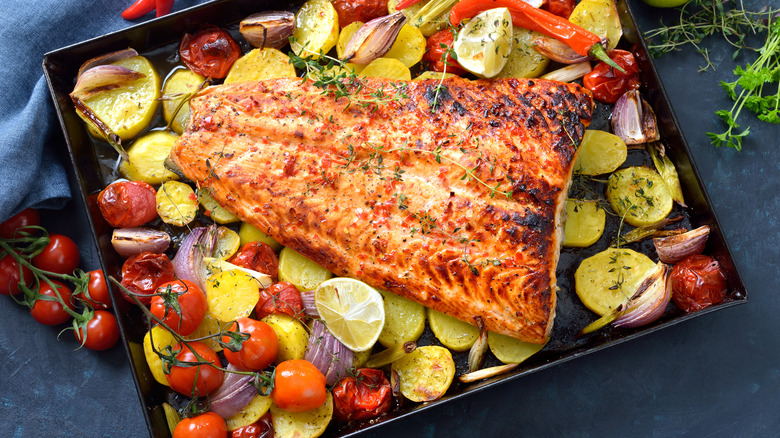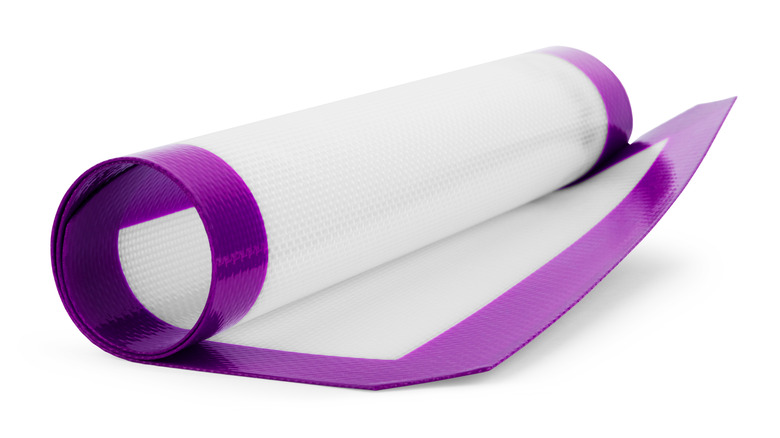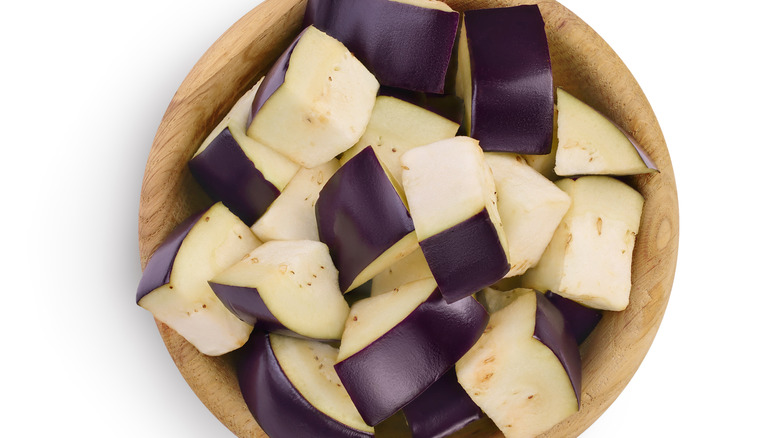Mistakes Everyone Makes When Roasting Food
The most common mistakes when roasting food all start (but don't end) with the mechanics of the Maillard reaction, that magical play between amino acids and sugars that makes for rich flavors and crisp surfaces (via Slate). If you've ever wondered why your best efforts to roast a dish still came up short, there are a few factors at play: the size and shape of the food, its salt and seasonings, as well as levels of both moisture and oil all make a difference in creating the perfect crispy, golden brown crust.
You can read a concise rundown on the scientific process from BYJU's, but the main takeaway is that, with its many variables, there's no need to make roasting harder than it has to be. Stop making these common mistakes when you roast your dinner and unlock the immense flavors hiding in foods that you once might have thought were bland or bitter.
Not considering surface area
Cutting your food into even pieces ensures that every ingredient of the same type will cook at the same rate. That means less risk of smaller cuts turning acrid and burning while bigger pieces are still undercooked.
More surface area also means more evaporation. Moist foods benefit from smaller dicing, cooking apace with drier ones that have been cut larger. If the food is particularly favorable to roasting (think potatoes), increased surface area yields more crunchy goodness. Caution, though: while, spatially, more Maillard reaction is always a good thing, a great roasted veggie should still have somebody beneath its crust for balance.
Yes, you can do this with roasted meats, as well. While some poultry skin is bumpy enough to crisp up without your help, The Spruce points out that waterfowl (like duck) have a layer of fat that needs exposure to heat to reduce. (This fat will also protect the muscle from drying out.) The outlet explains why some meats benefit from strategically scored X-marks to maximize Maillard crust. Anyone who's ever slow-roasted pernil knows the improvements that come from slicing the thick hide for even cooking below the crust ... as well as the otherworldly combo of juicy meat, sizzling fat, and crackling skin that results.
Not salting before you roast foods (yes, even veggies)
Sure, you know all about brining meat for extra flavor and moisture, but did you know a good brine benefits vegetables prior to roasting as well? Wired took a thorough look at the technique, and reported the biggest argument against salting your vegetables is they'll lose some crunch. That's not a concern when they're going to be roasted into a completely new texture anyway, and the added "snap" may help your vegetables weather the heat.
The important thing is giving the salt time to work its magic. For watery fruits and vegetables, the same article notes that timing and texture are changing factors, depending on the food being salted. A long dry brine in a strainer over the sink will remove some of the moisture that slows roasting, as will patting the slices dry with a kitchen towel just prior to cooking. Heartier veggies — especially cruciferous ones like broccoli, cabbage, and cauliflower — may benefit from a wet brine for a more even distribution of salt, and Wired recommends piercing tough hides with a fork to help the salt penetrate foods like asparagus faster.
Two things to watch out for: salt draws liquid out (and then back in, per Serious Eats), so dry your veggies to ensure they roast rather than steam. The second concern is that as your vegetables cook, their flavors will intensify, so beware of overseasoning the final product before it even hits the pan.
Using sugar the wrong way (or not at all)
At higher temperatures, sugar caramelizes, and that's a fine thing, but as Difference Between notes, caramelization is different from the Maillard reaction. Per Escoffier, the Maillard reaction becomes observably active at 285 degrees F (and is ideal when hovering just over 300 degrees, as per Cleverly Smart). Beyond 355 degrees, food can turn bitter and scorch — particularly small ingredients like garlic, which can go from perfectly roasted to acrid faster than any of us would like.
While veggies high in sugar like carrots excel at turning that perfect golden brown, low-sugar foods can use a helping hand. (Here's a starter list of such veggies, courtesy of Bio Trendies.) That's where a minimal amount of honey or sugar can really send your roast dinner soaring — remember, you're not trying to make these foods taste sweet, you just want the sugar to encourage browning.
As for meats, which mostly require longer cook times, you might be better off following Cook's Illustrated's recommendation of adding sugar to your brine (see the tip above) for a little flavor and to encourage browning.
Ignoring how flavors interact
Too many cooks spoil the broth, but so do too many seasonings. If you're roasting veggies under an entree (like a juicy chicken), that broth may be literal. Much like a one-pot meal, everything in your oven is going to be mingling its aromas and flavors. It's safest to let a single herb or spice dominate center stage, but if you want the complexities of proven combinations, Delishably has a comprehensive list of seasoning matches. If it's something other than the flavor profile used in the meat, be sure they go together. Nothing's more heart-breaking than perfectly roasted veggies that taste strange, so be cautious of using extremely strong spices such as anise unless they play well with the other seasonings involved, and the mains and sides that carry them.
However, if you're roasting a single ingredient or a fairly simple dish, feel free to use more complex seasonings. You may opt for a seasoning mix to introduce the vegetal favors absent from the dish. For example, roast celery can be a stringy, slimy affair, but celery seed will bring a wonderful flavor to roasted foods.
Keeping the pH neutral
You can accelerate Maillard formation through the miracle of modern chemistry. It's simple: If you want to accelerate the reaction, your food could use a pH push. "Manley's Technology of Biscuits, Crackers and Cookies" points out that browning occurs "more quickly in alkaline ... conditions." Slate credits the reaction's entrancing qualities to the numerous complex flavors that form when amino acids rearrange themselves with sugars.
Common ingredients added for this purpose are baking powder and baking soda. For exceptionally crispy chicken skin without affecting the muscle meat, you can add baking soda as a dry rub just before roasting, shares Bon Appétit. The outlet recommends adding ½ tsp of baking soda for every three pounds of chicken wings for optimum crispiness.
Using too much (or too little) oil
As Kitchn points out, oil isn't strictly necessary for roasting, but it does improve browning, so it's best to include it in your roast recipe. But you only have to get oil on your fingers once to realize a drop is enough to coat plenty — after all, you're browning the food, not the oil. So why send your vegetables swimming in the stuff? Use just enough to lightly coat the food. This will not only ensure the veggies cook up faster than if they were sopping in oil, it'll also prevent them from ramping straight to scorched if you decided to roast them dry.
With that skill perfected, a little bit extra is fine if you're worried they're under-coated and have to choose an error to make. This is a forgiving step, where eyeballing it is good enough, and it's a lot easier to pull out veggies out before they fry than it is to scrape dry, burnt food off a pan because there wasn't enough oil. A little extra oil can also help you absorb the nutrients better, as reported by Iowa State University.
Final tip: if cooking veggies under a racked roast, be mindful yet again of runoff from its drippings. While this can be a wonderful way to flavor vegetables, it will affect the balance of oil and fat you just mindfully prepared.
Treating temperature as a constant
Very few ovens run precise to the dial, so you'll want to double-check with an oven thermometer to confirm you're actually in the range you want to be.
On top of that, even the best ovens have hot and cold spots. If you want to get a sense of yours prior to an important roast, you don't even have to buy a special device. King Arthur Flour recommends the "toast test" to find your oven's. Arranging a dozen slices on two racks and checking periodically will give you a strong sense of the oven's heating patterns (and when you're done, you've got a selection of toast for Sunday brunch or Monday's croutons).
Even if you have a consistent oven and are checking your thermometer (through the glass window), Bon Appétit says the best thing you can do when roasting food is rotate it midway through cooking. This will spare one side from taking all of the conductive heat of the pan while another side dries in the convective heat of air movement.
Meanwhile the easiest thing you can do to maintain a consistent temperature is to keep the oven door closed. On "The Rachel Ray Show," chef Andrew Zimmern informed the audience that simply leaving the oven open for a few seconds could cost it half of the stored heat. Unless you're venting some particularly humid air, keep it shut unless absolutely necessary.
Failing to adjust for humidity
A little steam is a wonderful thing. It can bring out the bright color in veggies — and preserve it even after they've fully cooked. But here's the thing: As culinary scientist Jessica Gavin remarks in her guide to steaming, steam holds your food at 212 degrees F. It's useful for some cooking methods, but when roasting, steam is an obstruction. Only once the water on the surface has evaporated away can your food get to the important business of browning.
If the food is piled up or too crowded in hour pan, or if your oven's air is so humid that water can't evaporate, your meal may steam to doneness before it roasts.
When you can't space food out on the pan, there are methods of remedy at your disposal. For crowded racks, this is a perfect time to make use of your oven's convection fan. If your oven has this wonderful feature, it will circulate air, heating your dish up evenly and removing water from the surface faster without — as Cook's Illustrated charted — increasing food's internal temperature.
For a more hands-on fix, opening the oven door obviously lets a lot of steam out, and may be more efficient despite the heat loss.
Not using a silicon mat to make life easier
You don't need a silicon mat to roast beautifully, but allrecipes makes a strong case for why you'd want one. Unless you prefer scraping and scrubbing a baking sheet in the sink for 10 straight minutes — and that's assuming your sheet even fits in the sink — a silicon mat is a good investment.
The mat's surface also means less oil is needed, and chunks of food are less likely to stick and tear, and if they do, it's a lot easier to lift, roll, and peel the mat away from them.
Best of all, a silicon mat fits easily in the dishwasher the way a baking sheet or rack never can, by folding or rolling up to occupy a small amount of space. You'll start to wonder how you ever roasted without one ... and you might just find yourself roasting a lot more often once this trusty tool finds its home in your kitchen.
Starting all ingredients at the same time (or size)
While meat is in the oven for a long haul, vegetables tend to cook more quickly and at lower temperatures. Why, then, would we assume that all vegetables cook at the same rate? Fine Dining Lovers compiled a list of the ideal time, temperature, and cooking method for 48 different vegetables.
If you want to put everything in the oven at the same time and relax while it cooks, you'll have to put in a bit of work and familiarize yourself with the most practical methods, sizes, and shapes to cut each vegetable.
Dice tough root vegetables like carrots, parsnips, and sweet potatoes into smaller pieces to cook evenly with softer ones, or cut in even sizes but stage them so the most durable ingredients start cooking first. This can be a great way to get dinner started while you continue to do prep work, like cutting the more fragile vegetables that won't go in the oven until later anyway.
Above all, don't worry too much. You have a lot of flexibility here, and you can always pull out whichever part of the meal is cooking too fast. The important thing is to roast mindfully of the Maillard reaction's needs: amino acids, sugar, and the right range of heat.
